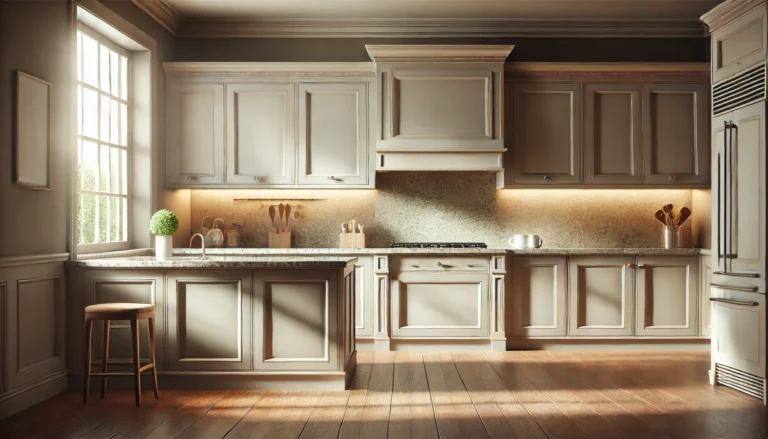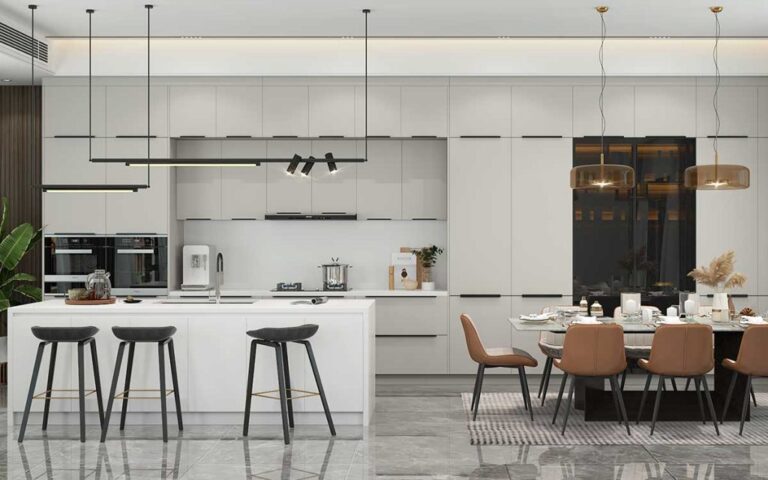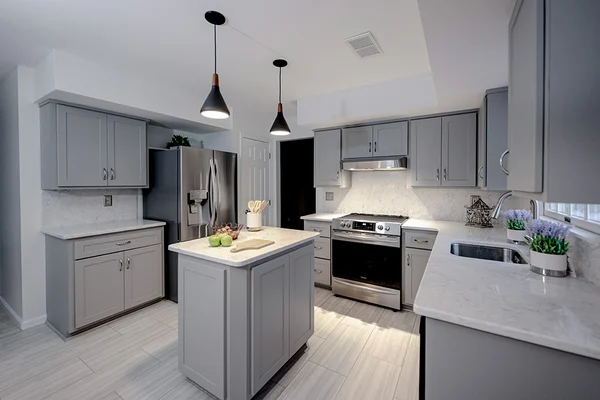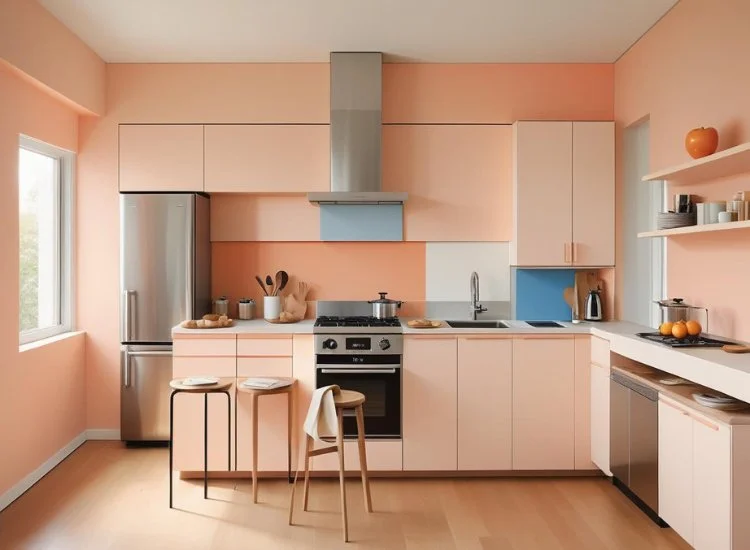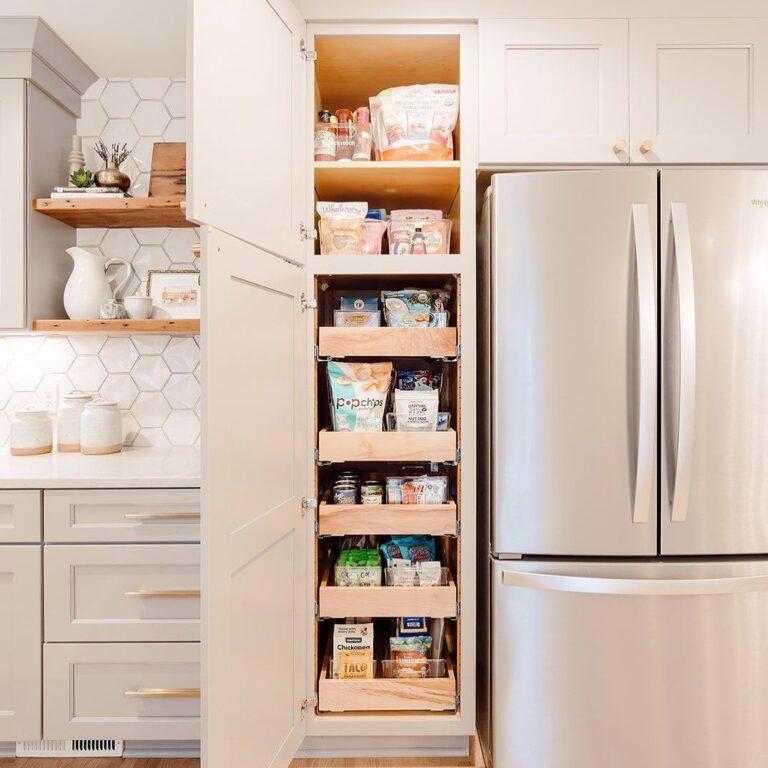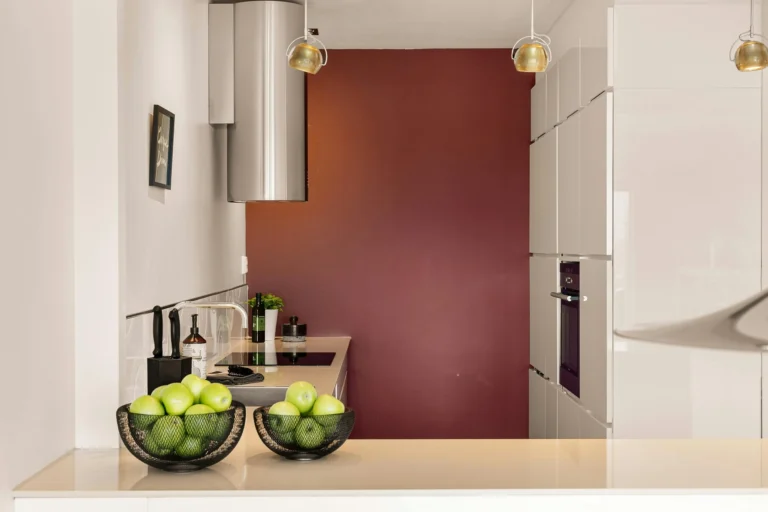How Much Does It cost to paint kitchen cabinets per door?
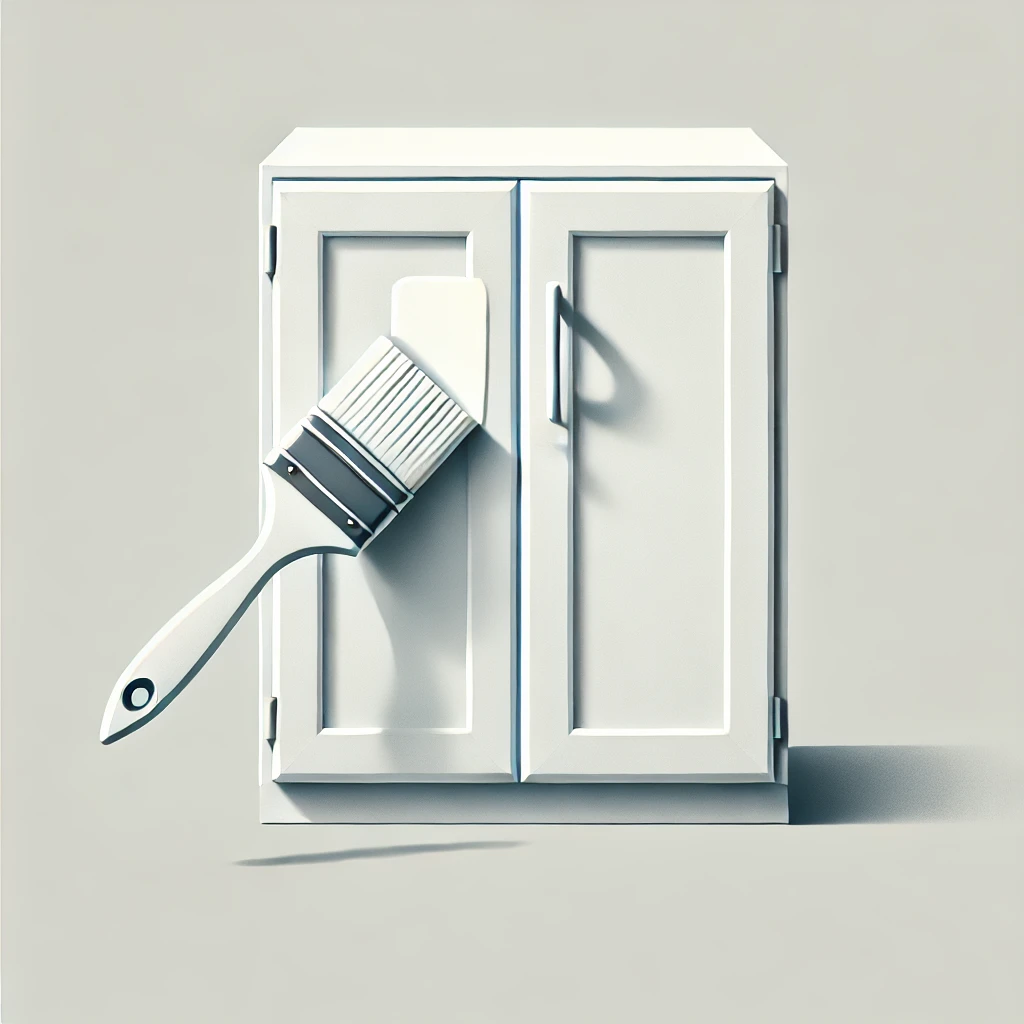
If you’re considering painting your kitchen cabinets, you may be wondering how much it costs to paint just one cabinet door. Whether you’re upgrading a single door or testing out a DIY project, understanding the cost factors involved can help you budget accordingly. The price of painting one cabinet door depends on several elements, including the materials used, the complexity of the job, and whether you’re doing it yourself or hiring a professional. In this guide, we’ll break down the cost considerations for painting one kitchen cabinet door to give you a clear understanding of what to expect.
From choosing the right paint to factoring in labor costs, this article will help you plan your project and ensure you get the best results for your money. Let’s dive into the various factors that contribute to the total cost of painting a single kitchen cabinet door.
Factors Affecting the Cost of Painting One Cabinet Door
When it comes to painting a kitchen cabinet door, the cost can vary depending on several key factors. From the size and design of the door to the type of paint used, every aspect plays a role in determining the overall expense. Here are the main factors that will influence how much you pay to paint one cabinet door.
Size and Design of the Cabinet Door
Cabinet size can directly impact the cost of painting. Larger doors require more paint and additional time for both application and drying. Additionally, intricate designs, such as raised panels or decorative molding, can add to the painting time and require more skill, increasing the overall labor cost. If your cabinet door has a simple, flat design, the process will generally be quicker and less expensive compared to a more detailed, carved door.
Type of Paint Used (Latex, Oil-Based, Chalk, etc.)
The type of paint you choose for your cabinet door can significantly affect the cost. Different paints have varying price points, and the quality of the paint can impact the final finish. Here are a few common types of paint used for kitchen cabinets:
- Latex Paint: Often the most affordable option, latex paint is easy to work with and dries quickly. It’s a popular choice for DIY projects.
- Oil-Based Paint: More durable than latex, oil-based paints provide a smooth finish but tend to be more expensive. They also require longer drying times and more ventilation.
- Chalk Paint: A trendy option for a matte, vintage finish, chalk paint can be more expensive than latex but doesn’t require priming or sanding, which may save time and effort.
The choice of paint will influence both material costs and the number of coats required to achieve a smooth, long-lasting finish. Choose a good paint colour that attract every guest.
Professional vs. DIY Painting Costs
One of the biggest decisions you’ll make is whether to paint the cabinet door yourself or hire a professional. DIY projects typically involve lower material costs, but they can take more time and effort. On average, you can expect to spend around $20-$50 on supplies if you’re doing it yourself, which includes the paint, brushes, rollers, and other tools.
Hiring a professional painter can significantly increase the cost. Labor rates for painting services vary depending on your location, but professional painters typically charge $30 to $70 per hour. For a single door, labor costs might range from $100 to $300 or more, depending on the complexity of the job and the painter’s experience.
Prep Work and Repairs Before Painting
Proper prep work is essential for a high-quality finish. If your cabinet door has existing paint that needs to be removed or the surface requires sanding and priming, the additional time and materials will increase the cost. Minor repairs, like filling holes or smoothing out imperfections, will also contribute to the overall cost.
Prep work is often the most time-consuming part of painting a cabinet door, as it ensures the paint adheres properly and results in a smooth, professional-looking finish. The more prep work involved, the higher the cost.
These factors—size and design, paint type, DIY vs. professional costs, and prep work—are all important when calculating the total cost of painting a single kitchen cabinet door. Understanding these elements helps you make informed decisions that will suit your budget and desired outcome.
Breakdown of Costs for Painting One Kitchen Cabinet Door
When you set out to paint one kitchen cabinet door, there are several cost components to consider. Whether you are painting it yourself or hiring a professional, understanding the breakdown of these costs will help you budget more effectively. Below, we’ll explore the different aspects that contribute to the total price of painting a single cabinet door.
Paint Cost Per Door
The cost of paint varies depending on the type and quality of the product you choose. On average, you can expect to spend between $20 and $60 per gallon of paint. However, for just one kitchen cabinet door, the actual paint cost will be much less since a gallon covers multiple doors. For a single door, the paint cost typically ranges from $5 to $15.
- Budget-friendly latex paint: Around $5 to $10 for one door.
- Mid-range oil-based paint: $10 to $20 for one door.
- High-end paints (like chalk or specialty finishes): $15 to $25 for one door.
Choosing a higher-quality paint may increase the initial cost but could result in a more durable and professional-looking finish that lasts longer.
Labor Costs for Professional Painting
If you opt for professional painters, labor costs will be one of the highest components of the total price. Labor fees typically range between $30 and $70 per hour, depending on your location and the painter’s expertise.
For a single cabinet door, professional painters usually charge a flat rate that could range from $100 to $300. This includes preparation, painting, and finishing time. For a simple door, it may take approximately 1 to 3 hours, but if there’s significant prep work required (sanding, priming, etc.), it could take longer, leading to a higher labor cost.
Supplies and Tools (Brushes, Rollers, Sandpaper, etc.)
The tools and supplies required for painting a single cabinet door will also add to the cost. If you are painting the door yourself, you will need a variety of items, such as:
- Brushes and rollers: Good-quality brushes and rollers cost around $5 to $15.
- Sandpaper or sanding block: Approximately $3 to $8.
- Drop cloths and painter’s tape: Around $5 to $10.
- Cleaner or degreaser: About $3 to $6.
Altogether, the supplies cost for DIY painting could range between $20 to $40 for one door. Keep in mind that many tools can be reused for future projects, so the initial investment might be lower in the long run.
Cost of Priming vs. Not Priming
Priming is an essential step in achieving a smooth and durable finish, but it adds an extra cost to your project. Primer helps paint adhere better, especially on surfaces that are glossy, stained, or have imperfections. The cost of primer typically ranges from $15 to $30 per gallon, and for a single door, you’ll likely spend around $5 to $10 on primer.
If you choose to skip priming (which is sometimes acceptable for light-colored cabinets or smooth, unblemished surfaces), you can save money. However, skipping this step may result in a less durable finish, requiring touch-ups or repainting sooner.
- Priming included: Adds $5 to $10.
- Skipping primer: Saves the cost of primer.
This breakdown helps illustrate how the paint, labor, supplies, and primer (or lack thereof) contribute to the total cost of painting one kitchen cabinet door. By understanding these factors, you can make a more informed decision based on your budget and the quality of the finish you desire.
Is It Worth Paying for Professional Cabinet Door Painting?
When considering whether to hire a professional to paint your kitchen cabinet door, it’s important to weigh the costs against the benefits. While DIY painting might seem like a more affordable option, professional cabinet door painting offers several advantages that might make the extra expense worthwhile. Here, we’ll explore the key reasons why paying for professional services can be a good investment.
Advantages of Hiring a Professional
Hiring a professional painter for your cabinet door comes with a range of benefits that could make the cost worth it:
- Expertise and Experience: Professionals bring years of experience to the table. They know the best techniques for smooth finishes, which can be challenging for DIYers, especially when working with intricate designs. A skilled painter can ensure your cabinet door has a flawless look that will last.
- Time-Saving: A professional can complete the job much faster than most homeowners can. They are equipped with the right tools and have the necessary expertise to get the job done efficiently, saving you time and hassle.
- Quality of Finish: One of the most notable advantages of hiring a professional is the superior finish. Pros have access to high-quality materials, spray equipment, and finishing techniques, which often result in a more durable and aesthetically pleasing outcome compared to DIY methods.
- Less Risk of Mistakes: When painting cabinets, small mistakes like streaks, drips, or missed spots can be frustrating. Professionals know how to avoid such errors, ensuring the final product meets your expectations.
- Long-Term Durability: Professionals often use premium-grade paints and primers, which not only improve the appearance but also enhance the longevity of your paint job. This means fewer touch-ups and a longer-lasting finish.
What You Get for the Price of Professional Painting
When you pay for professional cabinet door painting, you’re not just paying for the labor, but for the expertise and peace of mind that comes with a high-quality finish. Here’s what you get for the price of professional services:
- Thorough Preparation: Professionals will properly prepare the cabinet door by cleaning, sanding, and priming it, ensuring the paint adheres well and lasts longer. They may also make necessary repairs, such as fixing cracks or dents, before applying the paint.
- Top-Tier Paint and Tools: Professional painters use high-quality paints and brushes or sprayers, which result in a smoother, more even application. This ensures the final look is sleek and free of imperfections. The use of premium materials may also extend the life of your paint job.
- Guaranteed Results: Many professional painters offer guarantees on their work. If something goes wrong, such as peeling or fading, they will return to correct the issue at no extra cost. This gives you peace of mind that the job will be done right.
- No Mess or Clean-Up: Professionals take care of everything, from setup to cleanup. You won’t have to worry about drips, spills, or cleaning up brushes and rollers after the job is done.
- Time and Stress-Free Experience: If you have a busy schedule or simply don’t feel confident about doing the job yourself, hiring a professional will save you time and reduce the stress of trying to tackle a project you may not be equipped for.
While professional cabinet door painting is more expensive than doing it yourself, the results often justify the investment. The expertise, quality, and convenience that come with hiring a professional can save you time, frustration, and future maintenance costs. If you want the best possible outcome and don’t mind spending a little extra, professional painting may be the right choice for you.
How to Save on Painting One Kitchen Cabinet Door
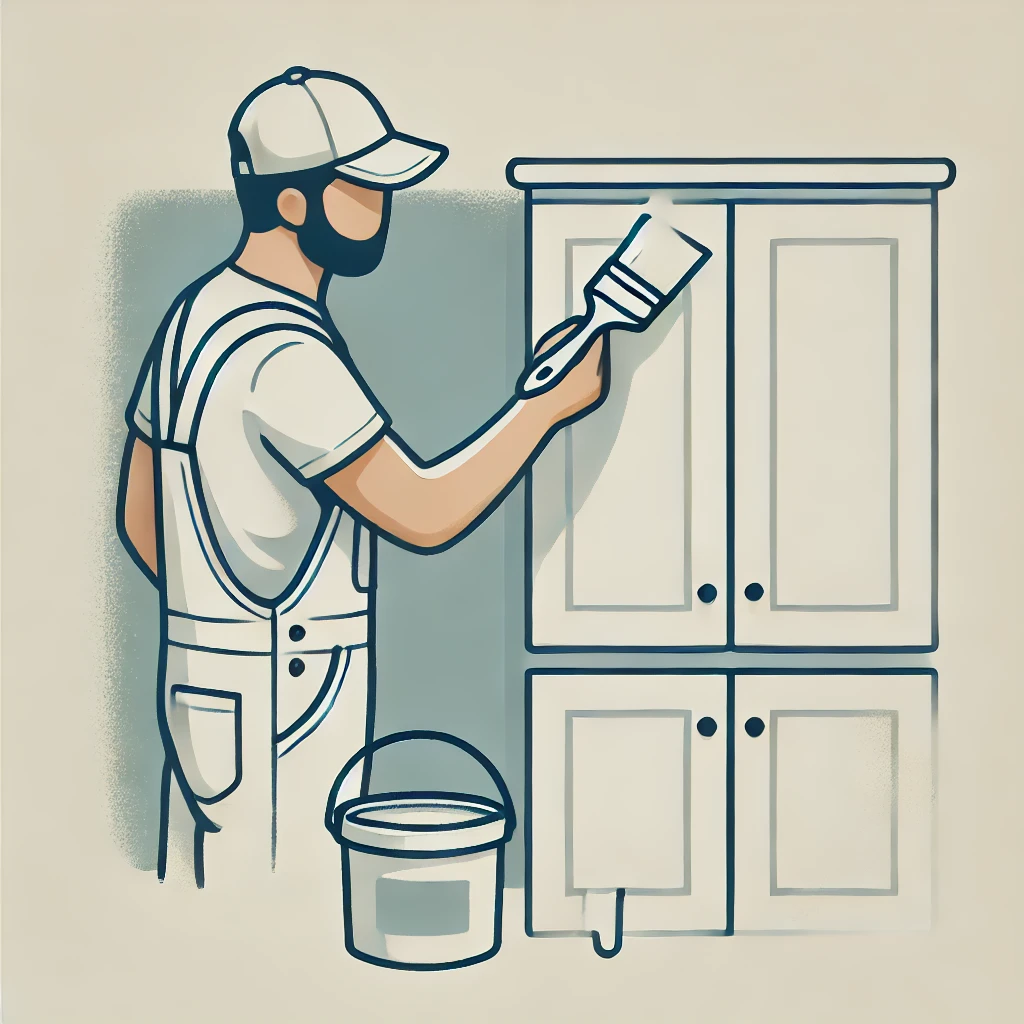
While painting a kitchen cabinet door can be an affordable way to refresh your kitchen, costs can add up quickly. Fortunately, there are several ways to cut down on expenses without sacrificing quality. Whether you’re handling the project yourself or hiring a professional, here are some practical tips to help you save money while still achieving a great-looking result.
Tips for Reducing Paint and Labor Costs
- DIY Painting: One of the most significant ways to save on costs is to tackle the job yourself. While painting a cabinet door requires time and effort, it’s much more affordable than paying for professional labor. The key to success is preparation and patience. Take the time to properly sand, prime, and apply the paint for a smooth, durable finish.
- Limit the Number of Coats: For a more affordable approach, consider limiting the number of paint coats. If your cabinet door is in relatively good condition, one or two coats of paint may be sufficient. Be sure to use a high-quality paint to get better coverage, which reduces the need for multiple coats.
- Buy Paint in Smaller Quantities: Instead of purchasing a gallon of paint, buy smaller cans. A quart or pint is often enough to cover a single cabinet door, saving you money on excess paint. Many stores offer sample sizes or small cans of premium paints, which can help reduce costs.
- Use Leftover Paint: If you’ve painted other surfaces in your home, consider using leftover paint. Just make sure the color and type of paint are suitable for your cabinet door. This is an excellent way to minimize costs if you have a paint can lying around.
- Opt for Standard Finishes: Specialty finishes like gloss or matte can add to the cost of painting, so if you’re looking to save, stick with a standard finish. Glossy or textured finishes require additional steps and products, which can increase the overall price.
Choosing Affordable Paint Options
- Select Budget-Friendly Paint: While high-end paints provide durability and finish quality, there are many affordable options available that still yield great results. Look for mid-range latex or water-based paints, which are cost-effective and provide a smooth, even finish. You can find good-quality paint for as low as $15 to $25 per gallon.
- Look for Sales and Discounts: Paint stores frequently offer sales, promotions, or discounts on their products, especially during off-seasons or holidays. Watch for special deals that could help you save on paint costs.
- Avoid Specialty Paints: While chalk paint, oil-based, or enamel paints can look great, they tend to be more expensive than regular latex paints. Unless you’re looking for a specific finish or texture, it’s best to avoid these more costly options for a simple cabinet door project.
- Consider Store Brands: Many home improvement stores offer their own brand of paint, which is typically cheaper than designer options but still offers good coverage and durability. Don’t be afraid to try a store-brand paint if you’re looking to save money without compromising too much on quality.
- Use Primer Efficiently: If you need to prime your cabinet door before painting, choose a paint-and-primer-in-one product. This can save you the cost of buying a separate primer and reduce the time spent applying multiple layers.
By following these tips, you can significantly lower the cost of painting one kitchen cabinet door without sacrificing quality. Whether you’re going the DIY route or working with a professional, these strategies can help you get a stunning result while staying within budget.
Common Mistakes That Increase the Cost of Painting Cabinet Doors
Painting kitchen cabinet doors can be a cost-effective way to give your kitchen a fresh look, but certain mistakes can lead to higher expenses. Whether you’re doing it yourself or hiring a professional, avoiding these common errors can help you save money and achieve a better finish. Here are some mistakes that can increase the cost of painting cabinet doors.
Skipping Surface Prep and Sanding
One of the biggest mistakes when painting cabinet doors is neglecting proper surface preparation. Skipping sanding or cleaning the surface can lead to poor paint adhesion, resulting in an uneven or flaky finish that may require additional coats or repairs.
- Consequences: Without proper sanding, paint won’t stick well, leading to peeling or bubbling later on. This can also cause the paint to look blotchy, forcing you to re-sand, prime, and repaint, adding time and cost to the project.
- How to Avoid: Always clean the cabinet door thoroughly to remove grease, dirt, or oils. Lightly sand the surface to create a smooth base for paint. Investing in this step ensures better results and fewer touch-ups, ultimately saving you money.
Using the Wrong Paint or Technique
Choosing the wrong type of paint or applying it incorrectly can lead to wasted materials and a subpar finish. Different paints have specific uses, and using the wrong one can result in issues like poor coverage or a finish that doesn’t last.
- Consequences: For example, using latex paint on a high-moisture area may cause it to peel, or using a glossy finish when you wanted a matte look could lead to an undesired shine. Additionally, improper application techniques (like applying too much paint or not allowing enough drying time) can lead to streaks, drips, or an uneven finish, all of which may require repainting.
- How to Avoid: Ensure you’re selecting the right paint for your cabinet material and the desired finish. Use a high-quality brush or roller, and follow the manufacturer’s instructions for application. If you’re unsure, ask a professional or test a small area before committing to the entire door.
Not Considering the Type of Finish
Another mistake is not considering the type of finish you want for your cabinet doors. Different finishes—such as matte, satin, or glossy—require different techniques and may affect the final look and durability of the paint job.
- Consequences: If you choose a finish that doesn’t suit the door’s material or the room’s environment, you may end up with a finish that doesn’t hold up well. For example, a glossy finish might show fingerprints or streaks easily, while a matte finish might be more prone to staining or wear.
- How to Avoid: Choose a finish that matches both your style and the functionality of your kitchen. For a more durable option, satin or semi-gloss finishes are popular choices for cabinets, as they are easier to clean and maintain. Consider the durability of the finish and how often the doors will be used before making your final decision.
By avoiding these common mistakes, you can keep the costs of painting your kitchen cabinet doors in check. Proper surface prep, choosing the right paint and finish, and applying the paint correctly are all essential for a smooth, long-lasting finish that doesn’t require costly touch-ups or repainting.
Frequently Asked Questions About Painting a Kitchen Cabinet Door
Conclusion: What to Expect When Painting One Kitchen Cabinet Door
Painting a single kitchen cabinet door can be a cost-effective and manageable task. The key costs involved are for materials like paint and tools, as well as any professional help for a smoother finish. With DIY efforts, you can expect a lower price, while hiring a professional will increase costs, but guarantee a polished result.
The process generally takes several hours of hands-on work, with additional time needed for drying. By focusing on proper prep work and choosing the right materials, you can achieve a fresh look for your kitchen cabinet without unnecessary expense or delays.

